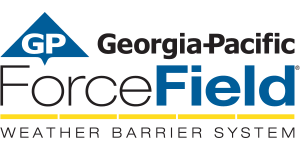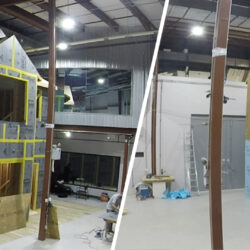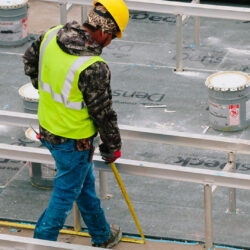From Dick Tracy’s wristwatch radio to Maxwell Smart’s shoe phone, wearable gadgets have a long history in fiction, but only recently has the promise of technology that’s as omnipresent as the very clothing we wear become a reality. Known collectively as “wearables,” these gadgets offer a wide range of functionality in an extremely portable package, freeing a worker’s hands to focus on more important things. Common examples include global positioning system (GPS) locators, voltage detectors, biometric and environmental sensors, and devices that monitor a user’s movements for signs of injury or overexertion. The variety of tasks wearables can perform is only beginning to come into focus, and with the market rapidly expanding, it’s likely that the technology we examine here today will seem primitive in just a few short years.
Outside of flying cars, few ideas trip our youthful exuberance toward technology like wearables, but they’re especially important for construction industry professionals for two key reasons: safety and productivity.[1]Featuring unrivaled portability – a crucial feature for any job site gadget – wearables excel at quietly gathering and transmitting information. That makes them perfect for tasks like monitoring worker wellness, disseminating project details as they’re updated, and capturing real-time job site data on demand – all features we could only dream about just a few years ago. For example, wearable technology that monitors workers’ movements and vital signs are being implanted into clothing and protective gear to help keep them even safer on the job site.[2] Biometric sensors that monitor repetitive motions and vital signs including heart rate, body temperature and blood pressure are helping to notify managers if workers may be suffering from overexertion or heat exhaustion before they suffer a serious injury. And GPS and location trackers allow supervisors to create virtual boundaries for workers’ protection and alert them if they’ve wandered into a dangerous area. Meanwhile, products such as smart glasses and helmets that display task instructions designed to help train workers on the fly and bionic suits designed to increase the amount of weight they can lift have the potential to increase their efficiency significantly.[3]
Among the most common wearable features is GPS location tracking, and Redpoint Positioning’ Real-Time Location System (RTLS) is a good example of why.[4] A small device that can be worn, carried or embedded in a safety vest, the RTLS offers real-time location tracking, as well as built-in lights and sirens. The device allows workers to request help in an emergency at the touch of a button and helps responders track and locate them via a mobile app. The RTLS can also alert workers when they’ve entered an area designated as restricted by supervisors, as well as monitor their proximity to hazardous materials.
Expanding on this idea are SolePower’s smart boots, a line of footwear that include GPS and radio-frequency identification (RFID) tracking technology alongside sensors to monitor temperature, motion, falls and worker fatigue. Each of those data points can protect a worker from injury, and having all of them wrapped up in a single package integrated within a worker’s boots is clever, practical and efficient. Best of all, SolePower’s boots never need to be plugged in. Instead, their soles include kinetic chargers that draw the electrical power necessary for all of the boots’ features from the impact of a wearer’s steps. On a job site where electrical outlets are at a premium, a device that charges itself represents one less hassle to deal with.[5]
Seeing the value in wearables, even Caterpillar has jumped into the market with its Cat® Detect system. A novel approach to utilizing RFID technology, the Cat® Detect system incorporates an RFID locator tag embedded in a worker’s safety vest or hard hat and an RFID-detecting antenna attached to a vehicle or piece of heavy equipment. If the antenna detects that a worker has wandered too close to an active piece of equipment or stepped into the path of a vehicle, the system provides unmistakable warnings and can even automatically deactivate the threat, preventing accidents and protecting workers from injury.[6]
While the safety benefits of wearables can’t be overstated, they also offer enhancements to worker productivity that seem pulled straight from the pages of a science fiction novel. The DAQRI smart helmet, for instance, is a futuristic hard hat that doesn’t just feature the impact sensors you’d expect from a wearable, but also includes an augmented reality (AR) heads-up display that can be used to feed information to a wearer in real-time, and a camera that can create and upload photo and video records of a project in progress.[7] A similar, yet more compact solution can be found in the XOEye Smart Glasses, which offer a real-time two-way conduit for information in a form factor that’s only slightly more bulky than traditional eyeglasses.[8]
Perhaps the most exciting wearables on the horizon are the exoskeletons. While not quite as feature-packed as Tony Stark’s Iron Man suit, these full-body devices offer users enhanced strength and endurance far beyond the limits of the human body. While powered exoskeletons offer the most impressive advancements, most are overly bulky and the technology still requires a sizeable power source, which limits portability. More recent designs that utilize hydraulics, however, offer increased mobility, and are likely to become common on construction sites in the near future.[9]
Despite everything we’ve looked at today, we’ve only scratched the surface. Wearables are a new field, and the biggest players are only just entering the arena. Over the next few years, we will undoubtedly see wearables both shrink in size and offer new and even more impressive features. While some are unnerved by the fact that wearables offer employers unrestricted freedom to monitor their employees, the safety and productivity benefits of these technologies are too appealing to ignore. Plus, the high-tech nature of wearables is especially appealing to younger generations, which may help ease the ongoing construction labor shortage. Whatever your role on the job site, whether you’re brand new to construction or a veteran with decades under your belt, there’s a wearable to enhance your safety and improve your performance, and more are coming soon.
[1] Mario Honrubia. Wearable Technologies Changing the Construction Industry. January 30, 2018. Retrieved from ennomotive: https://www.ennomotive.com/wearable-technologies-changing-the-construction-industry/
[2] Kendall Jones. Wearables Are Helping Make Construction Sites Safer. July 21, 2017. Retrieved from ConstructionConnect: https://www.constructconnect.com/blog/construction-technology/wearables-helping-make-construction-sites-safer
[3] Mariana Cid De Leon Ovalle. TOP WEARABLE TECH COMING TO CONSTRUCTION SITES IN 2017. Retrieved from BOSS Magazine online: https://thebossmagazine.com/construction-wearable-trends-2017/
[4] RTLS for Employee Safety. Retrieved from Redpoint Positioning: https://www.redpointpositioning.com/rtls-solutions/rtls-for-employee-safety/
[5] SolePower Smart Boots: http://www.solepowertech.com/#solepower
[6] Cat® Detect: https://www.cat.com/en_US/by-industry/mining/surface-mining/surface-technology/detect.html
[7] DAQRI Smart Helmet: A Deep Dive. Retrieved from Medium: https://medium.com/@DAQRI_Media/daqri-smart-helmet-a-deep-dive-b384f5997537
[8] Jon Phillips. XOEye smartglasses could be the all-work, no-play wearable that people actually use. April 9, 2014. Retrieved from PCWorld: https://www.pcworld.com/article/2141381/xoeye-smartglasses-could-be-the-all-work-no-play-wearable-that-people-actually-use.html
[9] Jean Thilmany. Exoskeletons for Construction Workers Are Marching On-Site. February 15, 2018. https://constructible.trimble.com/construction-industry/exoskeletons-for-construction-workers-are-marching-on-site
This article is intended solely as general information. Ultimately, the design and detailing of any project, assembly or system is the responsibility of a professional, and all projects must comply with applicable building codes and standards. For information concerning the limited warranty for the DensElement™ Barrier System, visit www.denselement.com. GP Gypsum disclaims any responsibility or liability for the architecture, design, engineering or workmanship of any project, assembly or system.









